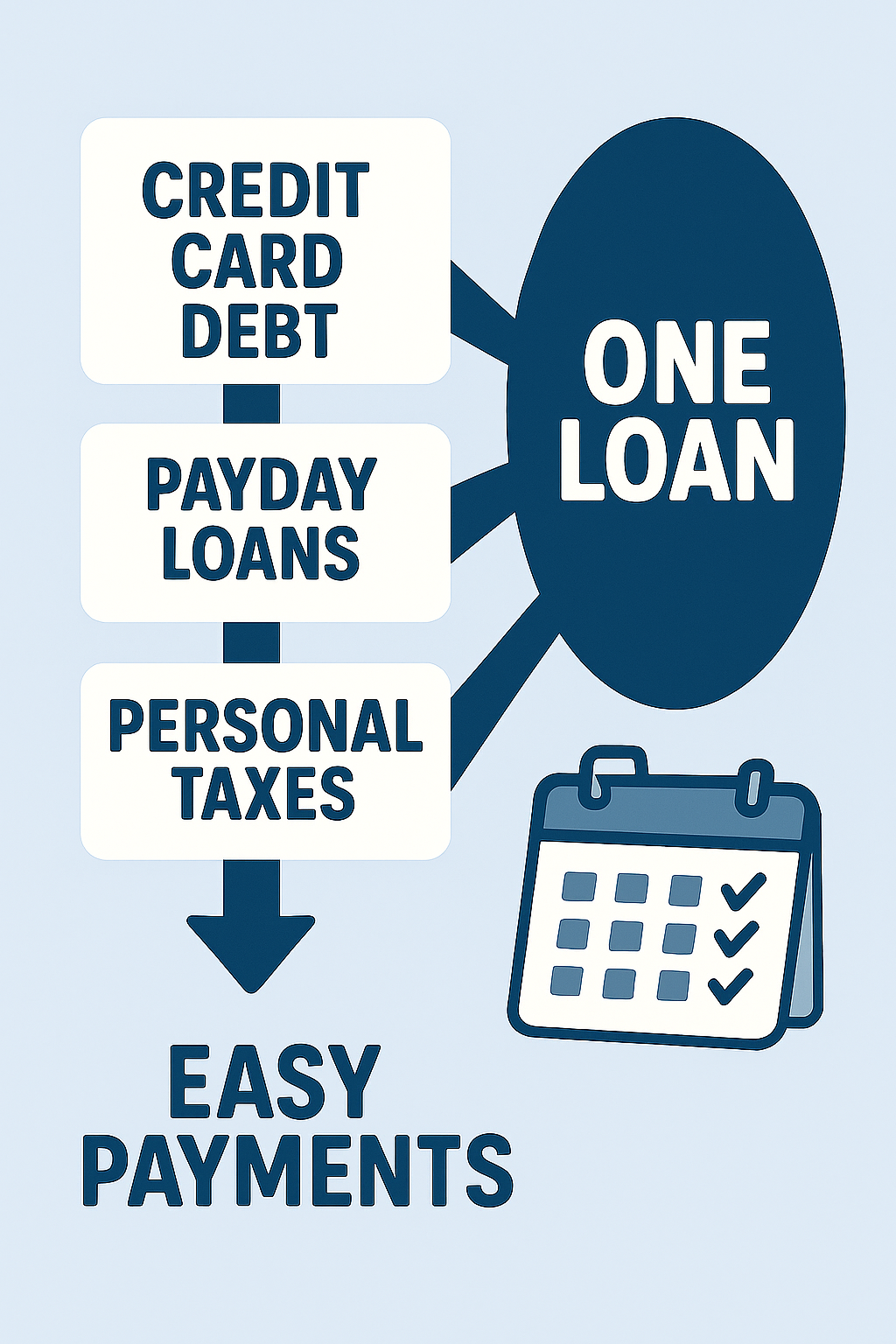Table of Contents
ToggleVendor Take-Back Mortgages Ontario: 2025 Guide
A Vendor Take-Back (VTB) mortgage is when the seller acts as the lender for part of the purchase price. In Ontario’s tight, rate-sensitive market, VTBs can bridge appraisal gaps, help buyers qualify, and help sellers move properties faster—often at better prices or terms. Below you’ll find structure options, legal must-knows, numbers that work in 2025, and how to protect both sides.
What is a VTB (Vendor Take-Back) Mortgage?
A VTB is seller financing registered as a charge/mortgage on the title where the seller (“vendor”) lends the buyer a portion of the purchase price. It can be:
-
First mortgage (rare)
-
Second mortgage behind an institutional first (common)
-
Unregistered promissory note with collateral assignment (less common; seek legal advice)
The VTB shows up in the Agreement of Purchase and Sale (APS) with terms (amount, rate, amortization/interest-only, due date), and is typically documented by your lawyer using standard Ontario mortgage/charge documents and Standard Charge Terms.
Why VTBs Are Back in 2025 (Ontario Context)
-
Affordability + stress test: Buyers with solid income still fail ratios. A small VTB fills the last 5–15% without private-lender pricing.
-
Appraisal gaps: If an appraisal comes in low, a VTB can bridge the shortfall without repricing the whole deal.
-
Marketability: Sellers can attract more offers, shorten time on market, or hold price by offering flexible terms.
-
Tax planning: Spreading proceeds over time may smooth capital gains (talk to a CPA).
7 Smart Ways to Structure a VTB (with Pros/Cons)
-
Small Second Mortgage (5–15% LTV) – Interest-Only, 6–24 Months
-
Use when: Buyer qualifies for an A-lender first but needs help with down payment or appraisal gap.
-
Pros: Lower monthly cost; quick exit at renewal/refi.
-
Watch-outs: Ensure subordination/intercreditor terms are acceptable to the first-mortgage lender.
-
-
Blended VTB with Step-Up Payments
-
Use when: Buyer’s income is rising (probation, bonuses, rents increasing).
-
Pros: Starts affordable; aligns with expected cash-flow growth.
-
Watch-outs: Spell out the payment schedule and late-payment treatment in the APS.
-
-
Seller “Holdback” Until Refinance (Bullet Due in 12–18 Months)
-
Use when: Refinancing is likely post-renovation or after discharge of consumer proposal.
-
Pros: Simple; interest-only or deferred interest.
-
Watch-outs: Confirm buyer’s exit plan (e.g., refinance timeline, broker pre-assessment).
-
-
Renovation-Tied VTB (Draws or Holdback)
-
Use when: Value-add projects where improvements unlock refi.
-
Pros: Protects the seller; funds released after inspection milestones.
-
Watch-outs: Define scope, milestones, and sign-off. Consider title insurance endorsements.
-
-
Rent-to-Own Bridge to VTB Close
-
Use when: Credit repair is needed before title transfer.
-
Pros: Buyer builds option credits; seller secures future sale.
-
Watch-outs: Clear option vs. rent breakdown; independent legal advice (ILA) on both sides.
-
-
VTB on Land or Mixed-Use with Higher Rate + Covenants
-
Use when: Traditional lenders cap leverage.
-
Pros: Deal gets done; seller earns a return.
-
Watch-outs: Strong default remedies, potentially personal guarantees, and environmental reps.
-
-
Wraparound VTB (All-Inclusive)
-
Use when: Existing first has a great rate and is assumable or can remain in place.
-
Pros: Buyer benefits from legacy rate; one payment to the seller.
-
Watch-outs: Due-on-sale clauses and lender consent. Complex—lawyer up early.
-
Typical Terms We See in Ontario (2025)
-
Loan size: Commonly 5–20% of purchase price (occasionally more on land/mixed-use).
-
Interest: Usually interest-only; compounding not typical.
-
Maturity: 6–24 months (12 months is common), often open with a 3-month interest penalty to discharge early.
-
Security: Registered 2nd charge; sometimes assignment of rents for income properties; personal guarantee if incorporated.
-
Covenants: Proof of insurance, property tax payments, and no additional encumbrances without consent.
Compliance notes (Canada/Ontario):
Interest disclosure must comply with the Interest Act (annualized rate clarity).
Criminal rate cap: effective annual rate must be < 60%.
Use licensed lawyers; consider independent legal advice (ILA) for both parties.
Title insurance is strongly recommended.
(General info, not legal advice.)
Numbers That Work: A Simple Ontario Example (Interest-Only)
-
Purchase price: $800,000
-
A-lender first: 75% LTV = $600,000
-
Buyer cash down: 10% = $80,000
-
VTB second: 15% = $120,000 (interest-only, 12-month term)
Monthly interest-only payment = Principal × (Annual rate ÷ 12)
If the VTB rate is 10%, payment = $120,000 × (0.10 ÷ 12) = $1,000/month.
Buyer plans to refinance in 12–18 months after credit clean-up and modest renovations.
Seller’s perspective: earns ~$12,000 interest in year one, potentially protects sale price and closes the deal quickly.
Buyer Checklist: How to Use a VTB Safely
-
Get pre-assessed: Have a broker confirm the first-mortgage approval with the VTB terms disclosed upfront.
-
Run the exit math: Can you refinance when the VTB matures? (Target LTV after improvements, income growth, or debt consolidation.)
-
Document everything in the APS: rate, compounding (if any), payment frequency, prepayment penalty, maturity, default rate, and remedies.
-
Budget for legal + discharge costs: You’ll have two mortgages to register/discharge.
-
Insurance & taxes: Keep the property insured and taxes current, many VTBs treat arrears as default.
-
Independent legal advice: Protect yourself and avoid future disputes.
Seller Checklist: How to Offer a VTB Without Regret
-
Underwrite the buyer: Ask for income docs, credit, net-worth snapshot, and a clear exit plan.
-
Register proper security: Second charge, assignment of rents (if applicable), PG for corporate buyers.
-
Confirm 1st-lender consent: Some lenders need to approve a second mortgage or intercreditor terms.
-
Price for risk: Rate, fee (if any), and prepayment penalty should reflect duration and borrower profile.
-
Define default clearly: Missed payments, unpaid taxes, uninsured property, unauthorized further charges.
-
Tax planning: Discuss capital gains deferral/spread with a CPA before signing.
-
Title insurance: Adds protection for both parties.
Negotiation Tips That Close Deals
-
Use a short term (6–12 months) with a clear refinance window.
-
Interest-only keeps payments manageable; consider a 3-month interest penalty for early payout.
-
Cap the LTV: Keep combined LTV (first + VTB) reasonable (e.g., ≤ 90% on standard residential).
-
Milestone releases when renovations are part of the plan.
-
No surprises: Disclose the VTB to the first-mortgage lender and appraiser early.
What Can Go Wrong (and How to Mitigate)
-
Refi fails at maturity → Build in a one-time extension (e.g., 3–6 months) at a pre-agreed fee/rate.
-
Payment shock → Use interest-only and confirm stress-tested cash flow.
-
Title/priority issues → Register correctly; get intercreditor consent where required.
-
Tax surprises → Get CPA advice on capital gains timing and interest income reporting.
-
Relationship risk → Keep it professional; both sides take independent legal advice.
VTB vs. Private Second Mortgage
| Feature | VTB Second | Private Second |
|---|---|---|
| Source of funds | The seller | Private lender/investor |
| Typical cost | Often lower (relationship/pricing flexibility) | Higher (market-rate + lender & broker fees) |
| Speed | Fast if both sides are aligned | Fast, but more third-party steps |
| Flexibility | Highly negotiable | Set by lender policy |
| Appraisal gap help | Excellent | Good, subject to LTV caps |
Takeaway: If the seller is willing, a VTB can be cheaper and more flexible than a private second.
Ontario Paperwork & Process (Step-by-Step)
-
Offer Stage: Insert VTB clause in the APS with all key terms.
-
Disclosure to First Lender: Broker informs the first-mortgage lender; obtain consent if required.
-
Lawyer Instructions: Both parties’ lawyers draft and review Charge/Mortgage of Land, Standard Charge Terms, and any intercreditor agreement.
-
Title Insurance: Order policy with applicable endorsements.
-
Signing & Registration: Documents signed and registered on closing; VTB funds “advanced” via statement of adjustments.
-
Post-Close Servicing: Set up payments, track taxes/insurance, and diarize maturity/extension dates.
FAQ (Quick Answers)
Q1: What credit score do I need for a VTB in Ontario?
There’s no fixed score—it’s negotiated. Many sellers want to see a credible exit plan, stable income, and a manageable combined LTV.
Q2: Are VTB rates lower than those of private lenders?
Often, yes. Because sellers may accept a relationship premium (price retention, faster sale), VTB rates can be more competitive than typical private seconds.
Q3: Can a VTB be open for early payout?
Yes. Most Ontario VTBs are open with a simple 3-month interest prepayment penalty.
Q4: Do I still pay Land Transfer Tax?
Yes. A VTB doesn’t avoid LTT; it only changes how part of the price is financed.
Q5: Is independent legal advice required?
Not legally “required” in all cases, but strongly recommended for both buyer and seller to reduce disputes.
Q6: Can I get a VTB on a condo or rural property?
Yes—subject to the first lender’s policy and reasonable combined LTV.
Ready to structure a VTB on your deal?
Whether you’re a homeowner, investor, or listing agent, LendToday can help you design the right VTB structure, align it with first-lender policies, and map a clean refinance exit.
Book a quick call and we’ll outline terms that protect both sides and get your deal over the finish line.
- Mistakes to Avoid with Debt Consolidation Loans in Alberta (Before Your Situation Gets Worse) - December 4, 2025
- Steps to Take After a Notice of Sale in Ontario Is Issued(Before It’s Too Late) - December 2, 2025
- Ways Debt Consolidation Loans in Oshawa Can Transform Your Finances - November 30, 2025






